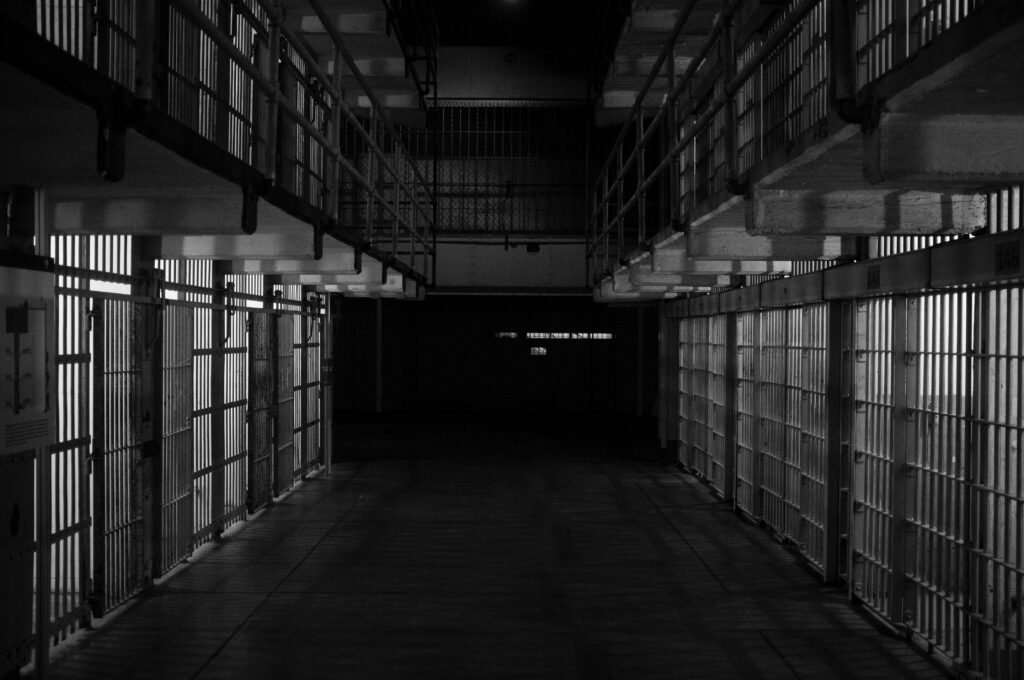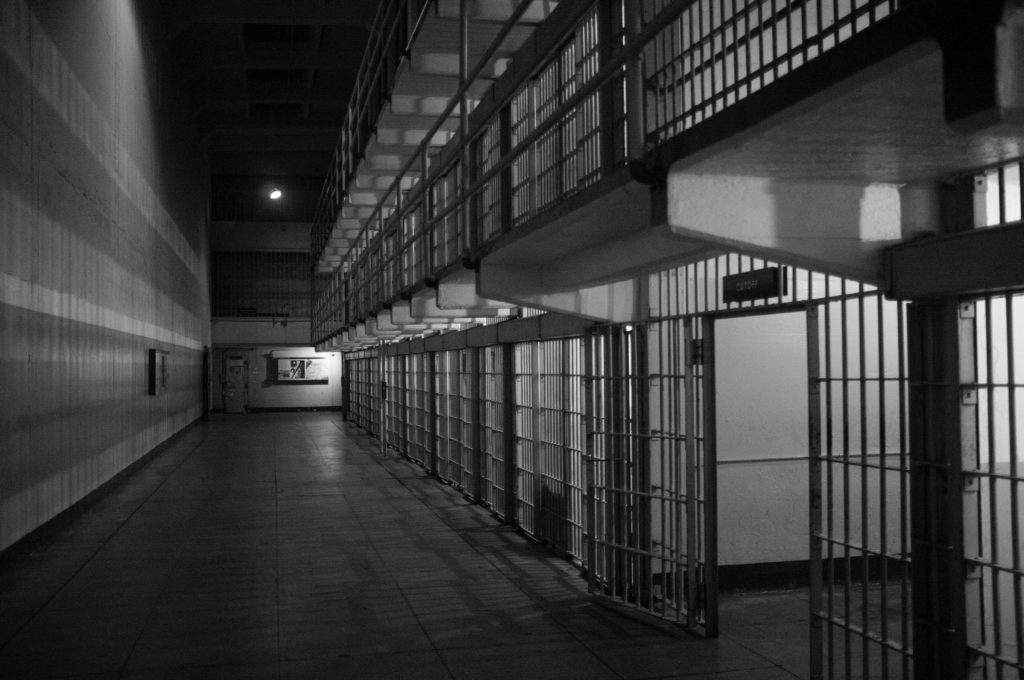By Max Anthony
On September 26, 2022, thousands of prisoners across the state of Alabama launched a labor strike in response to the “deteriorating conditions” and “pervasive violence” inside state prisons.[1] In fact, conditions have deteriorated to the point that multiple homicides and drug overdoses occur on a weekly basis resulting in a “new normal.”[2] This new normal caught the eye of the Department of Justice (“DOJ”), who filed a lawsuit against the Alabama Department of Corrections (“ADOC”) in 2020.[3] The lawsuit alleges, inter alia, that ADOC has failed “to provide safe conditions of confinement in violation of the Constitution.”[4]
Specifically, locks in ADOC’s prions are “broken or defective,” surveillance cameras do not function, and dormitories are “open and overcrowded” requiring prisoners to use “shared showering and toileting facilities.”[5] Additionally, plumbing does not work, causing routine “flooding.”[6] These unsafe conditions create “heighten[ed] tensions,” increasing violence.[7] For example, from 2018 to 2019, at least twenty-four prisoners were killed, leading to ADOC having “the highest homicide rate in the nation for a state prison system.”[8] From 2019 to 2020, “at least 825 prisoner-on-prisoner assaults” occurred with one prisoner being “stabbed repeatedly in the face” and another hospitalized after being stabbed in the stomach twenty-six times.[9]
Even the correctional officers contribute to the violence.[10] For instance, four correctional officers were indicted in 2020 after “using excessive force on a prisoner and for obstructing justice by filing false reports to conceal their misconduct.”[11] Others have beaten “handcuffed prisoners . . . by striking them repeatedly with a baton.”[12] All of this has been caused by ADOC’s failure to provide “adequate” educational and work opportunities and its failure to “implement effective classification and housing policies.”[13]
DOJ, however, is challenging these conditions of confinement as violative of the “Eighth and Fourteenth Amendments” of the United States Constitution.[14] The question remains then whether the prisoners can challenge the conditions of their confinement through a writ of habeas corpus.
The Supreme Court has explicitly left open the question of whether prisoners may challenge the conditions of their confinement through a writ of habeas corpus.[15] Recognizing this unanswered question, the Supreme Court, in Ziglar v. Abbasi,[16] explained in dicta that habeas would provide a faster and more direct route to relief, “if necessity required its use.”[17] Although the Court declined to determine the scope or availability of a habeas remedy because it was not at issue, it did explain that a successful habeas petition would require “officials to place [prisoners] in less-restrictive conditions immediately.”[18]
Further, in Preiser v. Rodriguez,[19] the Supreme Court determined that when a prisoner is put “under additional and unconstitutional restraints during his lawful custody” habeas corpus may be available to remove the restraints “making the custody illegal.”[20] This is because habeas may be “available to challenge such prison conditions.”[21] The Court also clarified that if a prisoner challenges both the conditions of their confinement and the fact or length of the confinement, the “latter claim . . . is cognizable only in federal habeas corpus.”[22] However, the Court declined to define the contours of habeas because plaintiffs properly filed under § 1983.[23] In his dissent, Justice Brennan concluded that some instances remain where a claim may “properly be brought in habeas corpus, even though it is somehow sufficiently distant from the ‘core of habeas corpus.’”[24]
Indeed, earlier Supreme Court cases established that prisoners may use habeas corpus to challenge the conditions of their confinement. For example, in Johnson v. Avery,[25] a state prisoner sought relief from his confinement in a maximum security unit through a writ of habeas corpus.[26] The prisoner was challenging a prison regulation that barred prisoners from assisting others in preparing writs of habeas corpus.[27] The Court held that habeas corpus could be used to challenge unconstitutional conditions of confinement when prison regulations conflict with “federal constitutional or statutory rights.”[28] In fact, the Court emphasized the “fundamental importance of the writ of habeas corpus in our constitutional scheme.”[29]
Circuit courts, however, are split on the question of whether prisoners can challenge the conditions of their confinement through a writ of habeas corpus.[30] For example, in unpublished opinions, the Fourth Circuit has held that conditions of confinement claims are not cognizable in habeas proceedings.[31] All of these cases cite Preiser to hold that a conditions of confinement claim is only appropriate in a § 1983 claim, not through a habeas petition. However, the Preiser court simply concluded a § 1983 action is a “proper remedy” for a state prisoner challenging only the conditions of their prison life, “but not the fact or length of his custody.”[32] But, in the very next paragraph, Justice Stewart clearly stated, “[t]his is not to say that habeas corpus may not also be available to challenge such prison conditions.”[33]
As Justice Brennan made clear in his dissent, the court’s holding simply means that if a prisoner is challenging the fact or duration of their confinement then a habeas petition is their only option, but a conditions of confinement claim can be brought either through a habeas petition or a civil rights claim.[34]
Using this analysis, the Court of Appeals for the District of Columbia Circuit, in Aamer v. Obama,[35] held a prisoner may challenge the conditions of their confinement “in a federal habeas corpus petition.”[36] The court specifically stated that Preiser did not “hold that the converse is also true—that is, that any claim challenging something apart from the fact or duration of confinement may not be raised in habeas.”[37] Instead, the D.C. Circuit concluded the “weight of the reasoned precedent in the federal Courts of Appeal” compels the conclusion that conditions of confinement claims may be brought through a habeas petition.[38] This view is further supported by the First Circuit, in United States v. DeLeon,[39] which concluded “[i]f the conditions of incarceration raise Eighth Amendment concerns, habeas corpus is available.”[40]
In sum, the writ of habeas corpus should encompass a challenge to a prisoner’s conditions of confinement. Including these claims within the scope of habeas will allow it to “to achieve its grand purpose—the protection of individuals against erosion of their right to be free from wrongful restraints upon their liberty.”[41] In doing so, prisoners will be freed from the torturous conditions that are stripping them of their basic human rights.
[1] Keri Blakinger, Alabama Said Prison Strike Was ‘Under Control.’ Footage Shows System in Deadly Disarray., Marshall Project (Oct. 6, 2022), https://www.themarshallproject.org/2022/10/06/alabama-said-prison-strike-was-under-control-footage-shows-system-in-deadly-disarray.
[2] Id.
[3] Complaint at 1, United States v. Alabama, 2020 WL 7246531 (No. 2:20-cv-01971-JHE) (Dec. 9, 2020).
[4] Id. at 1–2.
[5] Id. at 18.
[6] Id. at 19.
[7] Id.
[8] Id. at 6–7.
[9] Id. at 7–8.
[10] Id. at 14–15.
[11] Id.
[12] Id. at 15.
[13] Id. at 12.
[14] Id. at 20.
[15] See Bell v. Wolfish, 441 U.S. 520, 526 n.6 (1979) (“[W]e leave to another day the question of the propriety of using a writ of habeas corpus to obtain review of the conditions of confinement, as distinct from the fact or length of the confinement.”).
[16] 137 S. Ct. 1853 (2017).
[17] Id. at 1863.
[18] Id. at 1862–63.
[19] 411 U.S. 475 (1973).
[20] Id. at 499.
[21] Id.
[22] Id. n.14.
[23] Id. at 500.
[24] Id. at 506.
[25] 393 U.S. 483 (1969).
[26] Id. at 484.
[27] Id.
[28] Id. at 486.
[29] Id. at 485; see also Wilwording v. Swenson, 404 U.S. 249 (1971) (concluding state prisoners have a cognizable claim in habeas corpus to challenge their living conditions and disciplinary measures in prison); In re Bonner, 151 U.S. 242, 259 (1894) (“[The writ of habeas corpus] was intended as a protection of the citizen from encroachment upon his liberty from any source”) (emphasis added).
[30] See, e.g., Nettles v. Grounds, 830 F.3d 922, 931 (9th Cir. 2016) (holding state prisoners can only use a habeas petition if their claims lie at the core of habeas corpus); Miller v. United States, 564 F.3d 103, 105 (1st Cir. 1977) (recognizing federal prisoners may challenge the conditions of their confinement through a habeas petition under 28 U.S.C. § 2241).
[31] See, e.g., Wilborn v. Mansukhani, 795 F. Appx. 157, 164 (4th Cir. 2019) (concluding prisoner’s challenge to the conditions of his confinement do not “fall within the scope of habeas corpus”); Rodriguez v. Ratledge, 715 F. Appx. 261, 266 (4th Cir. 2017) (explaining plaintiff’s deprivation of good conduct is cognizable under § 2241, but his challenge to the conditions of his confinement is not).
[32] Preiser, 411 U.S. at 499.
[33] Id.
[34] See id. at 505 (“Yet even though a prisoner may challenge the conditions of his confinement by petition for writ of habeas corpus, he is not precluded by today’s opinion from raising the same or similar claim…by suit under the Ku Klux Klan Act, provided he attacks only the conditions of his confinement and not its fact or duration”).
[35] 742 F.3d. 1023 (2014).
[36] Id. at 306.
[37] Id. at 300.
[38] Id. at 306.
[39] 444 F.3d 41 (1st Cir. 2006).
[40] Id. at 59.
[41] Jones v. Cunningham, 371 U.S. 236, 243 (1963).




